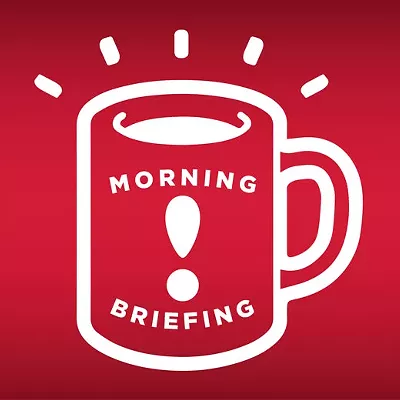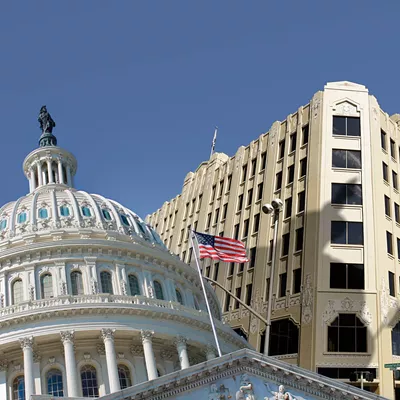Wednesday, March 2, 2016
Letters show MAC board accused Forrest Rodgers of missed deadlines, insubordination

In January, Forrest Rodgers and the Museum of Arts and Culture board presented a united front when interviewed by the Inlander. Behind the scenes, it was a different story.
We may never know exactly why, last month, the Museum of Arts and Culture's board fired its executive director, Forrest Rodgers, for a second time. But in a recent story, the Inlander provided some possible hints, involving multiple state investigations into the MAC and an ongoing clash between Rodgers and the board.
Now, the Inlander has obtained a series of four January letters from the board of the Museum of Arts and Culture to Rodgers that further lay out complaints the board had with the ousted director, including numerous missed deadlines, communication mishaps, and even "insubordination."
Board president Toni Pessemier says the letters were sent to provide the sort of clarity that Rodgers had requested regarding the board's expectations.
"None of these documents were needed for us to make a decision for a removal," Pessemier says. "We could remove him at any time."
Unlike last time, there may not be a lawsuit. Bob Dunn, who successfully represented Forrest Rodgers against the museum back in 2012, was contacted by Rodgers again this year. But this time, Dunn determined that the proper procedure has been followed.
"We were asked to determine whether or not the procedure was appropriate and we determined they used the proper procedure," Dunn said. "The other question is, is there any legal claim that arises out of what they did — not how they did it — and we haven't been asked to take a look at that."
Either way, the MAC is moving on. Pessemier says the board is trying to clarify its process for finding a new executive director, including who's going to be on the committee and whether the search will be national or regional.
"I can’t say enough how excited we are moving forward," she says.
In the meantime, here are the takeaways from the letters Rodgers was sent in January. Pessemier says she doesn't recall a written response from Rodgers on any of them.
The Work Plan letter
• The board was repeatedly unsatisfied with the quality of Rodgers' "Work Plan," noting that an initial draft on Dec. 16 "failed to meet the Board's expectations in part because it was missing specific tasks, staff roles, and measurable goals."
Rodgers, according to the board, agreed to submit a revised Work Plan by Dec. 25. But while Pessemier sent him a reminder of the assignment on Dec. 23, Rodgers didn't submit his revisions until Jan. 1. And even after his revisions, the letter reads, his Work Plan still failed to meet expectations.
"It is unclear why you have failed to comply with this expectation despite repeated efforts by the Board to provide you with direction regarding plan development," the letter reads.
The letter gave Rodgers another extension to Jan. 15, to finish a properly formatted work plan.
He missed that deadline too. Rodgers told the Inlander that he had been "too busy working on a capital budget request" regarding the predesign to respond to the board's work plan request.
The Museum Budget letter
• Another letter raised concerns about the timing of when Rodgers provided the board with a proposed revised museum budget. Typically, the letter explains, the proposed revised museum budget is provided in the summer, soon after the legislature approves its final budget. (In this case, the legislature finished up on June 30.)But this year, the letter says, Rodgers didn't provide a revised budget until six months later, on Jan. 2.
"The Board recognizes that the Museum's financial positions have been short staffed due to departures," the letter reads. "However, such issues do not negate obligations regarding the financial management of the Museum. The current request for the Board to approve a revised budget does not provide the information necessary for the Board to take such action..."
The board requested that Rodgers provide a new proposal to the museum's finance committee before the February meeting. Pessemier says he never did.
"My response to the budget memo was to be delivered to the board president on the day I was fired. It wasn't delivered," Rodgers told the Inlander last month. "But it rejects the concern and the statement that we had not been providing appropriate financial management. It provides a chronology that demonstrated what we had been doing in the three months we had a vacancy for the finance manager position. That we have been maintaining internal controls. We have been reporting to both [Department of Enterprise Services] and the Office of Financial Management... and that we were getting no clear direction from the Finance Committee for its expectations for how we were reporting to the board."
The Inlander asked Rodgers to provide that copy two weeks ago, but never received it.
The Letter Concerning Board Instructions
• Failing to select "training regarding management skills through Department of Enterprise Services" for himself.
• Failing, after two different requests, to provide an unredacted copy of an email for a human resources investigation.
• Failing to "keep the Board fully informed and updated" regarding the "predesign" process.
• Failing to arrange a table for guests at the November Art Auction, as requested by board member Patty Dicker. "You are expected to work on development efforts which include fundraising activities for the Museum and in a situation like this to communicate with the Board Member if you find you may be unable to meet the request," the letter reads.
"Moving forward, understand that you are expected to comply with Board direction, including those phrased in terms of 'requests,' the letter continues. "Failure to do so constitutes a failure to meet the performance expectations for the Executive Director position and further constitutes insubordination."
The Bergstrom Investigation letter
A complaint from Richard Bruce, a graphic designer and a museum assistant employed by the Kalispel Tribe, sparked the board to request that Lois Bergstrom, a regional state human resources manager, look into Bruce's concerns to decide if a full-scale investigation was necessary. She ultimately decided a full-scale investigation wasn't necessary.
The conflict between Bruce and Rodgers is a messy one, concerning the American Indian Cultural Council, a Tribal docent program, a Facebook post, and access to Museum's image collection. And it wasn't just a conflict between Rodgers and Bruce — Bruce also clashed with several other museum staff members.
Without getting too deep into the weeds, here are a few takeaways from the letter to Rodgers responding to the investigation:
• Bruce told the investigator "that he does not feel that any of the actions by Mr. Rodgers or other members of the MAC staff
• However, drawing from the Rodgers' interview with Bergstrom, the board still had serious concerns: "The Board finds that the internal dynamics you described to Ms. Bergstrom are not evidence of effective leadership and fail to meet the Executive Director performance expectations," the board wrote.
• The board urged mediation between Bruce, Rodgers and several other staff members.
"You committed to
The mediation had been scheduled for February, Rodgers told The Inlander, but Rodgers was fired before then.
While Rodgers also told to the Inlander that Bruce had refused to talk with him, Bruce tells the Inlander that he was willing to meet and talk to Rodgers, but only with a mediator present.
"The rift between Mr. Rodgers and myself began in June," Bruce told The Inlander in a Facebook comment. "At that
Bruce, notes that back in 2012, he'd actually been a supporter of Rodgers.
"I don't know if I explained why I supported Forrest the first time. It wasn't because I liked Forrest," Bruce says. "It was because of the inconsistent and unprofessional way that they attempted to terminate him. I also took his family and the move from [Oregon] into consideration. Some very educated, talented and individuals with a lot of experience left the [MAC] when he returned."
The Board's Other Concerns
• On the issue regarding a member preview postcard being labeled late, Rodgers accepted responsibility for the tardiness and promised he would work to make sure the public was aware of related events.
• On issues regarding a Hagan Foundation Grant proposal, Rodgers outlined why he'd handled the grant the way he did, identified confusion, noted a small error in the proposal and promised to address it at the January all-staff meeting.
• And on the concerns about how he was handling staff matters, he promised to reaffirm his commitment to the "individual and team success" of his Leadership Team.
All five letters are embedded below, including Bergstrom's hand-written investigation notes.
MAC Board Letters to Forrest Rodgers
Tags: MAC; Forrest Rodgers; Bob Dunn , Arts & Culture , Image , Video



















